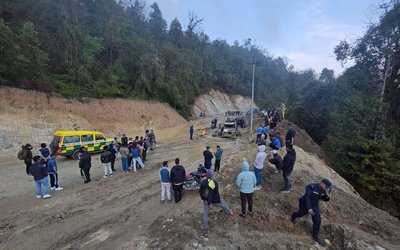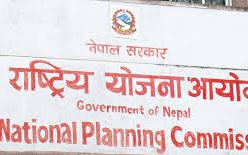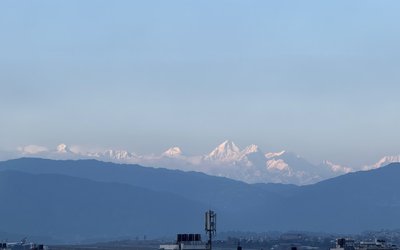
On 29 July 2019, a regional drought outlook system was formally launched in Islamabad by Mohammad Faisal – Director General, South Asia and South Asian Association for Regional Cooperation (SAARC), Ministry of Foreign Affairs, Pakistan – during the opening ceremony of the SAARC Regional Training on Earth Observation and Climate Data Analysis for Agricultural Drought Monitoring in South Asia.
Officials from SAARC member states are attending the four-day workshop jointly organized by the SAARC Agriculture Centre, the International Centre for Integrated Mountain Development (ICIMOD), the Pakistan Agriculture Research Council (PARC), and the Pakistan Meteorological Department (PMD).
The training, aimed at meteorological, agricultural, and climate scientists, focuses on data development and analysis techniques tailored for use in drought monitoring to understand drought and its implications better, and minimize the impacts of drought in the region.
In his inaugural remarks, Faisal highlighted South Asia’s extreme vulnerability to a range of climate impacts – from shrinking glaciers, water scarcity, and rising sea level, to changes in weather patterns, shifting monsoon patterns, and heat waves. Faisal commended the organizers for their efforts in enhancing regional capacity on the use of new technologies in combating drought and other climate change associated calamities.
Floods and droughts, especially, have become more regular and severe. The increasing severity of impacts, which often affects more than one country, exceeds the capacity of national governments to respond adequately on their own.
With SAARC, South Asian states have a viable platform to support national government responses. Legislations on climate change in SAARC countries – Afghanistan, Bangladesh, Bhutan, India, Maldives, Nepal, Pakistan, and Sri Lanka – have evolved accordingly. The heads of states of these nations have repeatedly expressed deep concerns with regard to regional challenges concerning environmental degradation and climate change. They recognize that these challenges are severely undermining development processes and prospects, and have therefore decided to intensify regional cooperation with a vision to strengthen their disaster risk reduction capabilities.
Speaking about the drought outlook system’s capabilities, Ghulam Rasul, Regional Programme Manager at ICIMOD, said that the system provides multiple indices for droughts and seasonal weather outlooks at the national and regional levels, and baselines on crop type maps, and farming practice calendars valid at the district level.
Muhammad Riaz, Director General, Pakistan Meteorological Department (PMD), highlighted the PMD’s role in generating timely advisory on extreme climate events, particularly on floods and droughts in the country. He emphasized on the need for close engagement with focal institutions to yield the best returns on investments. He stressed on the importance of using new technologies to combat climate risks.
Referring to the training, Pradyumna Raj Pandey, Senior Programme Specialist at the SAARC Agricultural Centre (SAC), said that it would enable participants to understand how satellite data, weather forecast, and early warning systems can help understand and manage droughts. He said, “This is the second joint training programme by the SAC and ICIMOD this year. We hope that this training will promote institutional capacities in generating data products related to drought.”
In his concluding remarks, Ghulam Muhammad Ali, Director General, National Agriculture Research Centre (NARC), Pakistan noted that the scale of the climate challenges we face today and will face in the future are now evident. “In Pakistan, some parts of the country are in the grip of severe drought, while others are waterlogged and flooded.” He called for strengthening collective efforts to develop, use, and apply science-technology-innovation at all levels. “We need support in agriculture, food, and climate change technologies. I hope that this regional training workshop will provide excellent means in achieving these goals.”
M. Idrees Mahsud, Member, Disaster Risk Reduction, National Disaster Management Authority (NDMA) highlighted the lessons the NDMA has learnt from past catastrophic events and noted that NDMA Pakistan now has a well-structured Disaster Risk Reduction Plan as well as better preparedness.
Drought monitoring and early warning systems can support national- and local-level planning and agro-advisory services to help local populations and governments prepare for drought and cope with its impacts on agriculture.
Droughts do not harm immediately. Their impact on lives and productive assets is gradual, which is perhaps why they do not garner a lot of attention. However, while their onset is slow and creeping, the aftermath is long-term and crippling. Droughts are detrimental to agricultural production and impact food security. Their social and economic costs are dire. Droughts affect the lives and livelihoods of vulnerable communities the most.
In South Asia, most interventions are limited to the monitoring of meteorological droughts. The region does not have sufficient capacity in advanced remote sensing and climate data analysis, which support operational drought monitoring systems. Additionally, institutional frameworks like formal declarations on drought, and compensation and adaptation strategies do not exist. Although a considerable volume of climate data has been made available in the past decade, the uptake of such information by decision makers at local and management levels has been sparse.
The provisioning of user-oriented, accessible, timely, and policy-focused scientific information in the form of climate services can help society cope with climate variability and limit the economic and social damage caused by climate-related disasters. With this in mind, meteorological and agricultural institutions in the Hindu Kush Himalaya (HKH) and the South Asian region have been collaborating to establish regional agricultural drought monitoring systems.
About the drought outlook system
In collaboration with regional partners and global technical institutions, including the International Maize and Wheat Improvement Center (CIMMYT), ICIMOD has developed an integrated information platform linking weather and climate data with agricultural practices in South Asia. The web-based Regional Drought Monitoring and Outlook System for South Asia provides information on the in-season drought situation and outlook. The system can help agricultural sector professionals understand existing agro-climatic conditions by observing indicators and crop calendars. The seasonal forecast information provided by the system helps identify forthcoming droughts and plan short- and long-term mitigation measures. The system can also be utilized to assess environmental and economic impacts on vulnerable populations in the region.
- Nepal Electricity Authority cancels contract worth over Rs 1 billion, now electricity wires going to customers' homes are bare
- Apr 21, 2025
- Four people died in Taplejung after their vehicle caught fire after getting entangled in a live wire
- Apr 21, 2025
- RPP General Secretary Rana released on bail
- Apr 21, 2025
- Nepal requires Rs 21.165 trillion to implement SDGs goals
- Apr 21, 2025
- Putin's unilateral 'Easter ceasefire' ends, Ukraine suggests partial truce
- Apr 21, 2025















